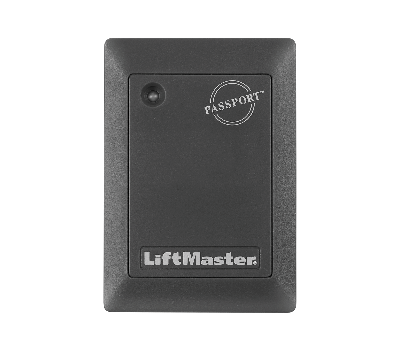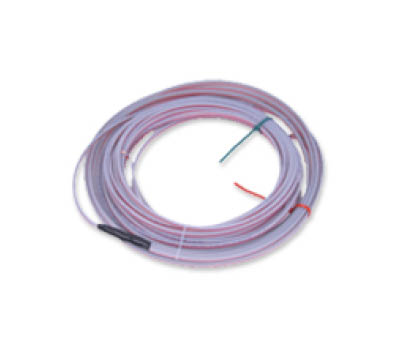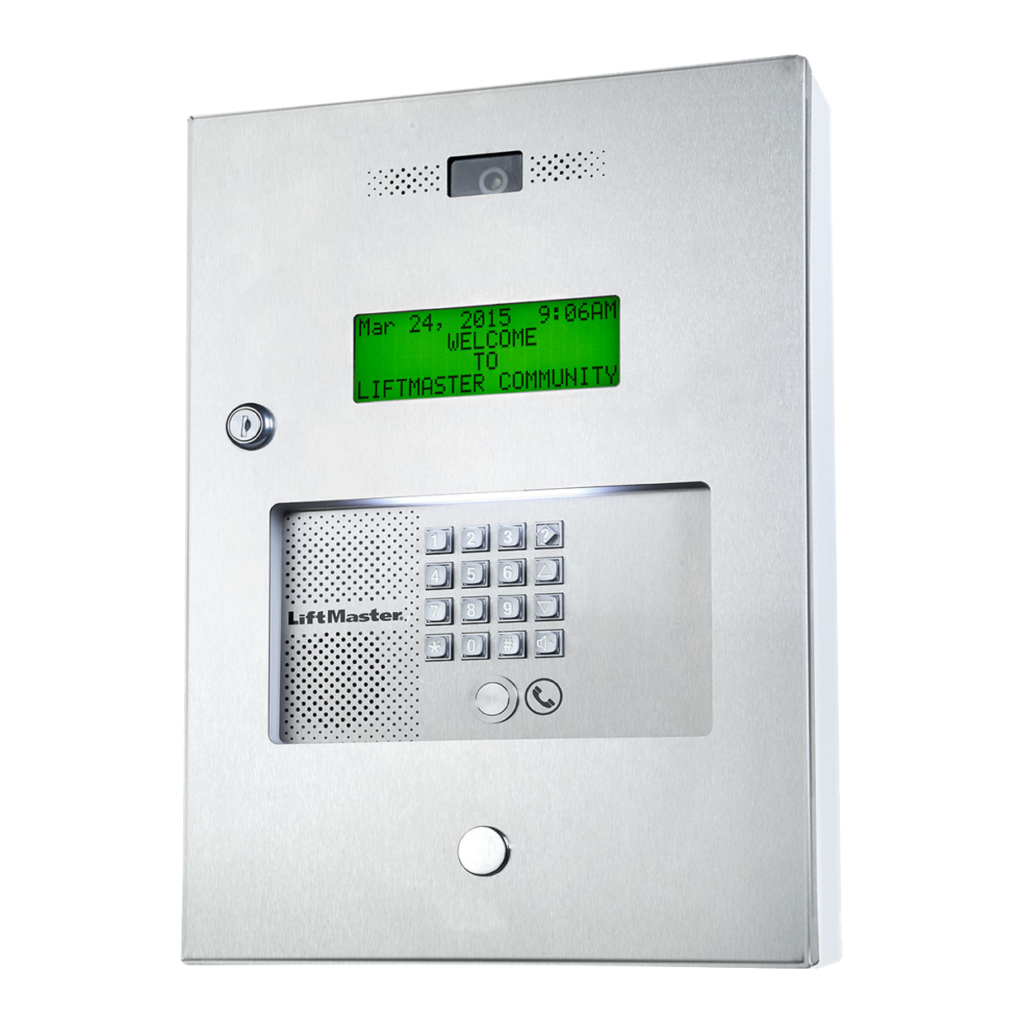Selecting Components
There is a wide range of automatic gate components. To help you narrow down your selection specific to your project, you should consider the following approach in the design of your system.
The first item to consider is if your gate will be secured during business hours. Regardless if the project is residential or commercial, you must decide if your gate will be open or closed during the day. “Day” in this instance can be defined as business hours or that period of time when you would reasonably expect non-family members to need access through your gate. This may appear to be an unusual place to start the decision-making process, but it is a critical first fork in the road in selecting your automated gate devices.
Automated gate control systems that are closed during the day or business hours will typically require some form of point of elevated entry communication device that communicates with others via cell phone, landline or intercom. In addition to the ability to communicate, these devices will also include point of entry access via keypad, remote or card reader. These devices include telephone entry devices, intercoms and computerized devices.
If your gate is open during the day, you may consider basic access control devices that do not communicate with others. These devices may be standalone keypads, key entry, push button and card readers.
The next consideration is the type of individuals who will require access through your gate while it is closed. Please consider if you need access for the following individuals.
- Family members or key employees. These are typically individuals who are given fully 24/7 access through the gate.
- These are individuals who are given restricted access based on scheduled regular time periods.
- Scheduled services. These are individuals who are given a limited number of access attempts for limited access periods. These may include cleaning services and the infrequent repair events. The individuals are limited to use the access code for a specific number of usages.
- Guests and non-scheduled services. These may include one-time guests who may or may not have scheduled a visit, postal delivery, food delivery, etc.
The next step in the selection of your electric gate devices is that entry and exit are reviewed separately. In other words, how each individual gains access to enter the property may vary from how they exit the property. Exiting the gate may not require the same level of scrutiny in deciding if the individual can open the gate. This will save greatly on costs and time.
The final step before actually selecting your devices is to understand that automated gate devices are divided into two types: Standalone and Computerized or programmable devices.
Standalone Devices
Standalone devices are not connected to other devices. These devices typically are used to control a single gate. Standalone devices are typically more cost competitive but also very limited in programming options and generating any reporting. Most standalone devices are programmed at the unit. Most importantly, standalone devices rarely have the ability to be tied to a single user and are not given a user ID. A standalone keypad is connected directly to the gate operator. The most common applications are single family dwellings and business with limited after-hours access.
Computerized Programmable Devices
Computerized devices typically communicate and are connected to a master controller. These devices can be connected to multiple other devices and gates. These devices may be programmed via personal computer connected to the master controller via the internet. Multiple users may be set-up in the master controller to have defined levels of access by gate and time zone. These computerized devices will also have a reporting mechanism where the controller is saving every entry and exit by each user. Often, these reports can be formulated by user, time zones, and gate. The most common applications are apartment complexes and gated communities.
Access control devices are available in both standalone or computerized programmable. If you have given some thought to if your facility must be secured 24/7 and the various individuals who will need access to your gate, you are now ready to select your access control devices for entering and exiting your automated gate. Below is a cursory list of the gate access control devices available today.

Gate Transmitter and Receiver
The most widely used access control device is the gate transmitter and receiver. The transmitter comes in a wide variety of options. Most commonly known as a “garage door opener,” the transmitter is typically a small gate remote that clips to the visor. One push and it sends a radio signal to a receiver in the gate operator. Once the signal is received and verified, the receiver sends a message to the operator to open and/or close the gate. Gate transmitters can be single channel or multichannel to control several devices. Many of today’s automobiles are equipped with a “Homelink” transmitter system that may be programmed to open your gate operator. There is even a hands-free device that automatically opens the gate when you approach without having to push any buttons.
Pedestal Mounted Keypad
Another widely used gate device is the pedestal mounted keypad. As a standalone device or computer programmable, the keypad requires a 3-5 digit code to access the gate. A single code may be used for all access attempts or individualized codes may be programmed to provide better security. The downside to a keypad is that codes may be shared with no limitations. A programmable keypad can track these codes and respective entry attempts.

Proximity Card Reader
For greater security, a popular option is a proximity card reader. As a standalone device or computer programmable, the card reader requires cards be given to those that require entry. You simply swipe the card in front of the pedestal mounted reader device. Once the card is verified, the gate can be accessed. Individualized programmable cards and card readers better control access and track access attempts.
Standalone Key Switch
A simple gate solution is a standalone key switch. Those that require access will be provided with a key. A momentary contact key switch will require you to twist the key, release and remove. A signal will be sent to the gate operator to open or close the gate. A constant contact key switch will require you to twist the key to an open or closed position and then remove. This will send a constant contact to the gate to open and keep the gate open until the key switch as been returned to the closed position. Lost or stolen keys will require you to rekey the device.

Push Button
For those not necessarily concerned about security but want a gate that is closed to keep pedestrians from making a wrong turn, a simple push button may be enough. Push buttons are available in a single button to open and close the gate. A two-button device with one button to open and one to close. A three-button device with one button to open, one to close and one to stop the gate. All of these button devices are available with a lock-out key device. Often times these button devices are placed out of sight.

Ground Loops
Ground loops are an excellent hands-free means to opening and closing gates. More than likely, these loops are placed on the inside of the gate. This allows for vehicles to pull-up on the loop to signal the gate to open. These interior loops used to open a gate are called “free exit” loops.
- Another option is to tie a loop to another access control device. This requires that a vehicle must be sitting on top of the loop for the access control device to be enabled to open the gate. These loops are called “presence loops.”
- A third type of loop is used to keep an open gate open and reverse a closing gate to the fully open position. These loops are called “obstruction loops” and are most commonly used to prevent a gate from closing on a vehicle.
- A fourth type of loop is a “shadow loop.” These loops keep an open swing gate open or prevent the gate from opening. Shadow loops are not operational as the gate passes over the loop, thus not sensing the gate and reversing.
- Loops are formed with a continuous wire that is in the shape of a loop in the ground. The loop wire is energized thus creating a magnetic field. When the magnetic field is interrupted by a large mass of metal, its detector sends a message to the gate to open, close, stop or whatever function you select.

Intercoms
If your gate is closed during business hours, you may need the basic ability for point of entry communication with those inside the facility that can open the gate. The most basic approach to this entry situation is an intercom system. Gate intercoms may be hardwired, radio frequency or Wi-Fi enabled. Basic intercoms will include the ability to not only communicate with those at the gate but a call button to initiate the conversation from the gate and a button to open the gate from within the facility. Intercom systems will include at least two components; one component installed at the gate and another unit installed within the facility.

Telephone Entry System
The next level up from the basic intercom is the telephone entry system for your gate. This system is advanced beyond the intercom system in its ability to connect point of entry communications with others via a phone number. Telephone entry systems include a component installed at the gate. This unit may be connected with a dedicated phone line, shared phone line or Wi-Fi enabled. The unit will include a “call button” that is programmed to call those authorized to open the gate. Those at the gate will communicate with others from the unit over the phone. Those on the phone will select one of the numbers on their keypad to open the gate. Telephone entry systems will also include a keypad for entrants to use a code to open the gate or select alternate authorized phone numbers. Telephone entry systems will typically also include some advanced features such as call waiting, call forwarding, one-time programmable entry codes, programmable time zones for the gate to be open, etc.

Computerized Entry System
The most advanced access control device is a computerized entry system. Computerized entry systems will include a primary unit that includes the circuitry for processing and storing information. Connected to this primary unit may be multiple secondary units that utilize the primary unit for validation and recording entry requests. Computerized entry systems will be connected via a data line or Wi-Fi. Programming may be completed remotely or at the unit via a laptop. Computerized entry systems allow you to control multiple points of entry that can include gates and doors. The system allows you to program each point of entry parameters and individual user parameters. Computerized entry systems will often have the same appearance and functionality as a telephone entry system but will also include more specific point of entry and user parameters, and high-level reporting functionality.
Below are some examples of common automatic gate sites that either fit a standalone or computerized programmable system.
- The facility is a food service manufacturing plant. Due to FDA regulations, it must be closed during business hours. The operation has several key employees, over 50 regular employees, scheduled services and non-scheduled deliveries. This facility will undoubtedly need an ability to communicate from the gate to those who have an ability to open the gate.
It may not be practical to anticipate someone will be constantly present to allow access. In that event, you will definitely want to select a computerized entry system where you can preprogram access for each type of individual.
Key employees will need access for after hours as they may be working long days. However, company leadership may want to know when these individuals are still coming and going.
With 50 regular scheduled employees, the FDA mandates that you will have to regulate and record entry and departure for these employees. Scheduled services such as supplier deliveries and customer pick-ups should be controlled and recorded.
Non-scheduled services such as UPS, Fed-Ex and repair services will not have access unless allowed entry by the facility.
- Another facility may be an equipment storage lot for a construction company. This facility should also be closed during the day. However, only a handful of employees may need access to the lot. In this event, a standalone keypad may be used to allow access.
Once you have selected your gate, gate operator, gate opener and gate control devices, you are now ready to design your pedestrian safety and vehicle detection system.
